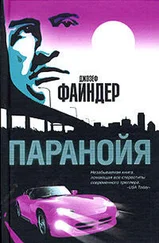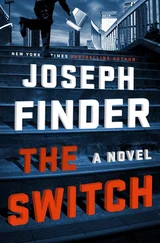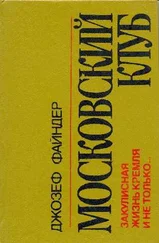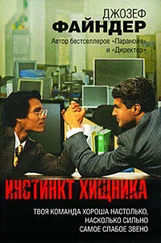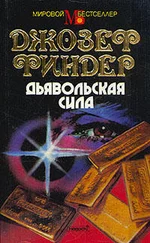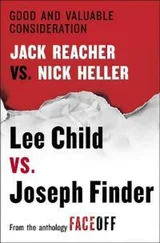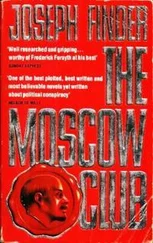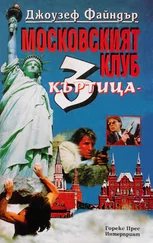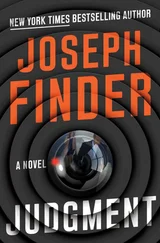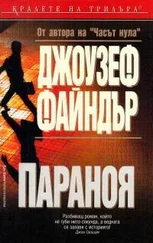Here’s the thing about close combat in real life: It’s almost always over in a matter of seconds. Not like in the movies, where your hero has the luxury to strategize and maneuver and grapple for minutes on end.
Fortunately, when your life is in danger, your brain kicks in. Deep inside your brain this little almond-shaped gland called the amygdala sends out the signal to make your body start pumping out dopamine and adrenaline and cortisol. Time seems to slow, your focus sharpens, you suddenly start perceiving way more stimuli than normal. Neurologists call this tachypsychia . Everyone else calls it the fight-or-flight response. Cavemen who didn’t have it got eaten by saber-toothed tigers.
So I made a quick decision. I could either be incapacitated by a Taser, or I could put myself within the reach of Bondarchuk’s fists.
No choice.
I dove at the giant, kneeing him in the stomach as I did so. He toppled to the ground, and I landed on top of him.
There was a loud pop and then a metallic chink-chink as Burris’s Taser fired its two fishhook probes into the Defender’s steel rear door. He’d missed me by about one second. Then came the rattling, frying-bug-zapper sound of the Taser sending out its electrical current.
Burris cursed. He couldn’t use the Taser again until he’d replaced the spent cartridge, which wouldn’t be easy with only one working hand.
Meanwhile, Bondarchuk reared up, taking me up with him like a forklift. But I really didn’t want to give him the chance to swing at me again. I kneed him in the chin, snapping his head upward. He sagged to the floor, finally knocked out.
“Tase him!” I heard. “Tase him, now !”
Taylor was on his knees, trying to get up. Behind him, Burris was fumbling with the holster clipped to his belt using the fingers of his wounded hand. Not a handgun. A replacement cartridge for the Taser. Both men were badly hurt, and neither was giving up.
The profit motive always works.
I guess I was motivated, at that precise moment, by pure raw anger. Winded and aching, I struggled to my feet, grabbing on to the side-view mirror of the Toyota Camry parked next to my car to hoist myself up.
But with a metallic groan the damned thing wrenched loose and I almost fell backwards. I got back up, kicked Taylor at the back of his head, and he, too, went down.
Burris managed to seat the new cartridge into the Taser.
I grabbed the Camry’s dangling side-view-mirror assembly, twisted it free, then hurled the heavy chrome mirror object at Burris. It clipped him on the forehead with a loud thud. He wobbled, the Taser slipped from his hand, and he toppled slowly, like a felled tree.
Leaning back against the Camry’s passenger-side door, I took a few deep breaths. The flex cuffs lay scattered on the floor near Bondarchuk’s feet. I snatched them up. Four nylon temporary restraints: He’d brought enough to bind my hands and my feet, with a few left over for good luck.
In a little over a minute I had all three of them cuffed. I figured they might regain consciousness in a few minutes. Even if they were out longer, why not slow them down as much as possible?
But just as I was pulling the cuffs tight on Burris’s wrists, he came to. He moved his head, groaned, opened his eyes. They were glassy and bloodshot.
“Big mistake,” he said.
“Hey there, Neil. We meet again.”
“Think this is over?” His speech was slurred.
“Yeah,” I said. “I think so.”
He didn’t reply.
The Taser was on the floor between his feet, calling out to me. It was already powered on.
He saw where I was looking, and he said, “Don’t even f–”
“Tell Koblenz that if he wants to ask me anything, he can make an appointment with my secretary.”
“You have any idea what Granger’s going to do to you? You’ll beg for death.”
“I haven’t used one of these in years,” I said.
Burris snorted. “Go ahead. Did the kid tell you he pissed his pants when my buddies gave him a ride home from school? Yep, that’s what I heard. He was probably too embarrassed to tell you that, huh?”
All of a sudden the Taser seemed too impersonal. I aimed my fist carefully at a small area behind his ear, at the base of his skull, a bony outgrowth called the mastoid process. I knew that if I wasn’t careful, I could break my hand.
So I was careful. I hit him hard and fast, and I didn’t break my hand. Burris went right out.
Clipped to his belt was his keycard. It had his photo printed on the front, along with his name and employee number and the Paladin seal.
The others, I knew, would have their cards with them as well. They might be mercenaries and ex-Navy SEALS but they were also corporate employees, and like cube dwellers everywhere, they never went anywhere without their keycards.
I jotted down their full names and dates of birth and employee numbers. I checked their wallets and noted the information on their driver’s licenses and wrote that down, too. Each had a rugged little push-to-talk Nextel cell phone. No car keys. Nothing else of interest.
I took Taylor’s phone, on the theory that the most senior guy would probably have the most access to higher-ups, meaning that he’d have the most useful phone numbers programmed into his phone.
I retrieved the gun from under the Defender. Always useful.
But it was the keycards that most interested me. They would get me into the building. Maybe into Paladin’s office suite as well.
Taking a keycard, however, was out of the question. Once Koblenz realized I’d taken it, that card would be deactivated, frozen. And I wasn’t yet ready to use it. Not quite yet. I needed time to prepare.
I examined Taylor’s card, and confirmed that it was the same exact type that Stoddard used, a PVC proximity card. Convenient, but not a huge surprise. The vast majority of corporations around the world issued key-cards just like the ones Paladin used.
It was the size of a credit card, with printing on one side. Actually, it was a sandwich: a layer of PVC, then a layer containing an antenna coil and an integrated electronic chip, then another layer of PVC, with an adhesive backing designed to go through the company’s on-site printer.
Most companies recycle keycards – they just reprogram them and peel off the label and stick on a new one. It wasn’t hard to peel the top layer off Taylor’s keycard, once I wedged a fingernail in there. I was able to swap his picture for mine in a matter of minutes. That way, they wouldn’t realize I’d taken one of their proximity cards. Taylor’s wouldn’t work, but that wouldn’t worry them too much. Maybe it had gotten damaged in the struggle.
Anyway, Taylor and his colleagues had bigger concerns than a nonfunctioning keycard.
I got in my car and headed out of the garage, and as I drove, I made a phone call.
Leland Gifford, who could barely use a computer, had become a BlackBerry addict. He no longer went anywhere without it.
That was not quite true. He never left the building without it. When he was in the building, he usually left it in his office.
At the moment he was in a budget meeting with the CFO and the EVPs, down the hall in the Executive Conference Room. His BlackBerry was in its usual place in his office.
Normally, Lauren went into Leland’s office only to put notes and files on his desk. He didn’t like her in his office too much, which was understandable. He wanted some zone of privacy.
Noreen was typing something at her desk. Lauren glanced at her quickly, then stood and walked quickly to Leland’s office.
Her heart was pounding.
She knew that she was about to betray a man she loved deeply. But she also knew she had no choice. If she wanted to save her family – to save Roger’s life, to protect Gabe – she had to do this.
Читать дальше

